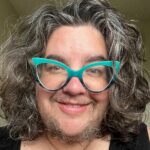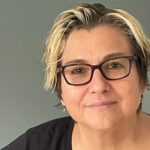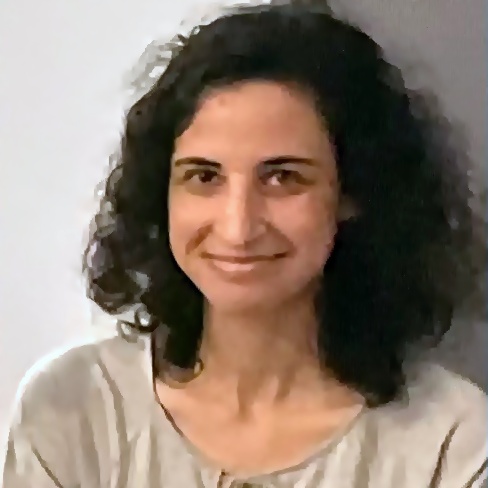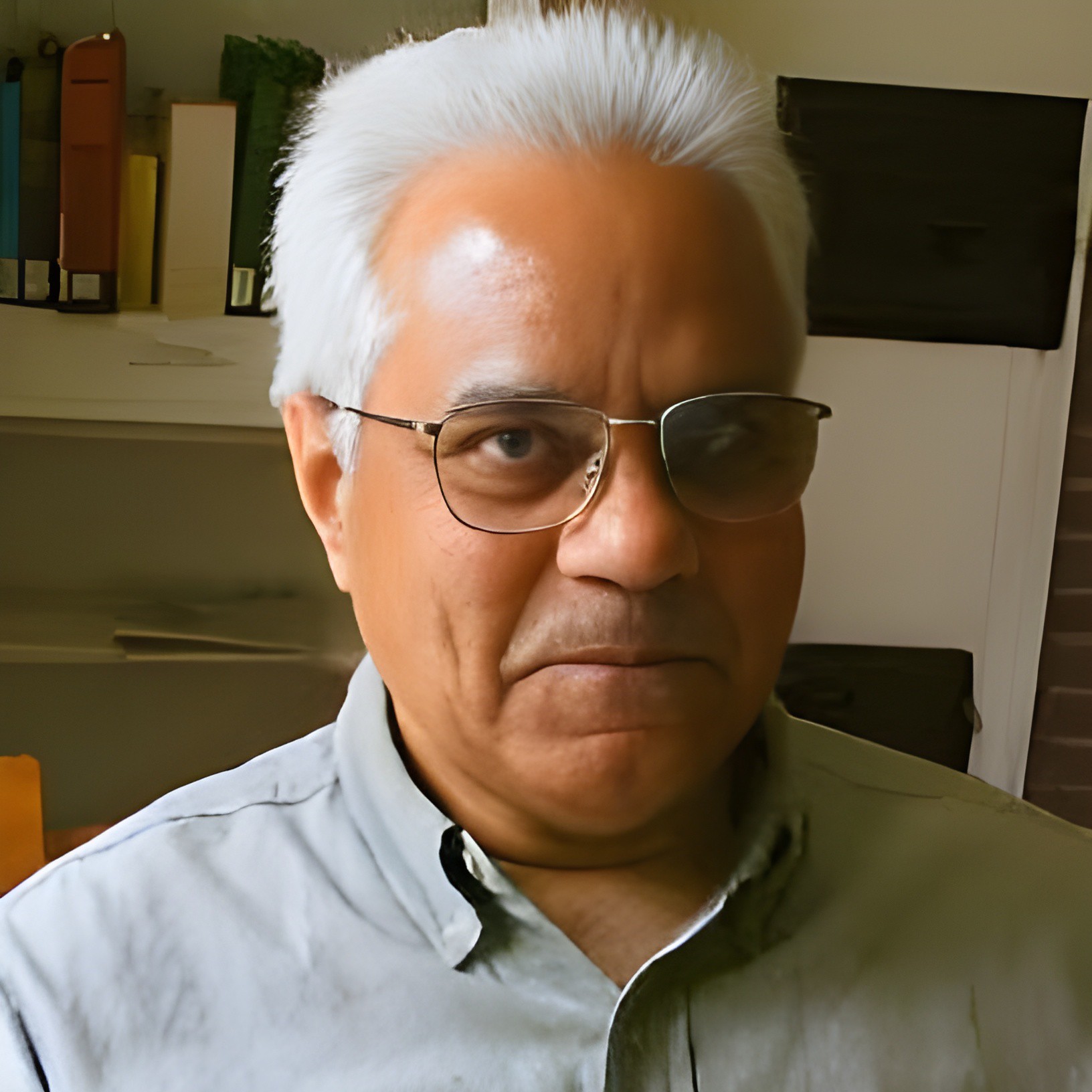

May 2024
BCBS: Nina and Dawn, would you please share a little about your dharma paths?
Dawn: I was drawn to a spiritual life through some mystical experiences as a child. Growing up in rural Indiana, however, Christianity was the one and only religious path that I had even heard about until I went to college. But at 18, when my college church offered ‘gay conversion’ meetings, I was angered. Even though I wasn’t out yet to myself, I felt strongly in my bones that claiming that gay conversion was ‘God’s will’ was a kind of violence. I generally gave up on spirituality for my college and grad school years.
A friend gifted me Pema Chodron’s book “When Things Fall Apart” at a time in my life when things were seriously falling apart. I was in grad school in Athens, Georgia in 2003, breaking up my first domestic partnership. I reconsidered my life goals, left school, and moved to Colorado. My leadership work at the local rape crisis center had me scouring the library to read everything by Thich Nhat Hanh and the Dalai Lama. I found Buddhist wisdom to be helpful in reframing my understanding of suffering in my own life and the lives of people around me. Some kind benefactors sent me to study at Upaya Zen Center in Santa Fe, first around ‘Fundraising from the Heart’ and soon with Roshi Joan Halifax and Sharon Salzberg.
This was around 2008, and I soon found my way to more regular practice with the Durango Dharma Center. Simply sitting and focusing on my breathing was not easy– mindfulness of my body felt like a trigger rather than a steadying force, after decades of avoiding connection with my fat body. I studied closely with Erin Treat, who offered some specific options, such as being mindful of sounds or thoughts, which gave me different entry points to feel more grounded in my personal practice. When I moved to the Bay Area in California in 2011, I joined the East Bay Meditation Center as a participant fired up about learning dharma with a lens of social justice. There, I learned much from Mushim Ikeda and Larry Yang in extended programs. I also started work with the Buddhist Peace Fellowship, and Katie Loncke and I worked together as co-directors to renew BPF as an organization that centered a political analysis around race, gender, and ability.
I became a trained meditation teacher in 2017, completing the 2-year Community Dharma Leaders program with Gina Sharpe, Larry Yang, Pam Weiss, and Eugene Cash as core teachers, and Sebene Selassie, DaRa Williams, and Erin Treat assisting. I began collaboratively teaching with others at East Bay Meditation Center and beyond on topics like Commit 2 Sangha, Finding Liberation in Relationship, Mudita Revolution, The Dharma of Being Anti-Racist, and Healing the Wounds of Christianity.
As I’ve healed my own wounds from my Christian upbringing, I have also re-evaluated how I got into dharma through a pathway where it was urgent that it didn’t feel too religious. Asian American Buddhists like Funie Hsu and Chenxing Han helped me ask more questions about the Asian roots of this Buddhist practice, how it’s not only about sitting silently on a cushion but also involves ritual, chanting, altars, and community. Those practices were initially scary to me because of my wounds around Christianity, not because of what they represent in Buddhism. Having moved to Portland, Oregon at the beginning of this year, I have an especially open and curious mind about the practices and communities that most tune me up toward liberation.
Nina: At the turn of the century (yup, I said that!), I took my first course in Buddhism and then began attending Peter Doobinin’s Downtown Meditation Center weekly. Every time I let go of practice, some life experience of suffering brought me back. In 2009, after several weeks in the ICU for treatment-resistant pneumonia, I came back to sit with him and the sangha as soon as I was able, oxygen tank in tow, following this breath that had recently been so painful, and before that boring and expected, and now utterly precious. I experienced each breath as a brand new unfolding of the enormous gift of still being alive. And after a prolonged period of depression finally interrupted by the new application of an old medication – intravenous ketamine – I rededicated myself to my practice, again rigorously, this time because ketamine infusions create periods of hyperelasticity in the brain, and I knew that mindfulness practice and meditation would help me lay new neural pathways that could compete against the deeply worn stories that colored my depression. Being mindful not just in meditation but throughout my days helped me to open up, be present for, and truly take in all the stunning beauty in the world, and to help me be present for all of life’s pain. Mindfulness, the Noble Path, and, my favorite, the Three Factors of Existence (that life is, as Ruth King says, imperfect, impersonal, and impermanent) helped me to make some sense of the chaos that is living. And the pursuit of the truth of existence through insight, unfolding moment by moment, also helped me amass some appreciation for my ability to also be present for all of life’s pain as well as its wonder. I’ve always been attracted to the historical Buddha’s instructions to not believe him, but try it for ourselves. And I’m a complete sucker for the elemental belief that we all have Buddha nature inside us.
Since then, I’ve had the benefit of many wonderful teachers, most formatively, Sebene Selassie, Sharon Salzberg, Jill Shepherd, and my current primary teacher, Roxanne Dault – and many more wonderful friends along the path.
BCBS: Can you please share a little about your experience as a self-identified fat person in dharma spaces?
Dawn: I have had some egregious judgments come my way from dharma teachers who felt like they were being ‘helpful’ in the way they knew how. One teacher was offering to mediate a conflict with another practitioner, and in the midst of an emotional conversation, turned to me and asked, “Is there a medical reason you can’t lose weight?” I burst into tears from surprise, shame, and already heightened emotion from processing a conflict that had nothing to do with my size. He seemed to think that a doctor’s note could potentially absolve me from the general moral failing he ascribed to me due to my size.
That experience was very disappointing and left me questioning whether dharma practice was for me. Yet it also crystallized for me all the small and large ways that dharma teachers had spoken through the lenses of diet and exercise culture, especially as mindfulness got picked up as a useful tool by the ‘wellness’ crowds in the United States. There was the recommendation to practice ’30 minutes per day’, which felt copied over from common recommendations for exercise. There was the teacher who recommended ‘willpower’ as the most useful path to steady my intermittent practice. There were the dharma centers that lacked chairs and cushions that offered basic comfort for my body. There were the regular examples of ‘greed’ being about the pull towards one of three things: ice cream, cake, or chocolate. There was the assumption that mindfulness of the body would be a simple introductory practice for everyone – rather than the most challenging set of practices for someone who had spent decades dissociating from their body.
The more I felt the threads of diet and exercise culture weighing down on my practice, the more I felt how shame still had a tight grip on my capacity for liberation. Shame knotted up my interest in practicing regularly, when I was constantly berating myself for not doing it enough or not doing it the right way. It was important to ‘see through’ these instructions on practice as being unconsciously delivered through the fat oppression of diet and exercise culture. I felt how shame was not the right fuel for practice. If anything, it was slamming on the brakes. I got curious – what could feel like the gas I needed for practice? I added some priorities around comfort, joy, and even pleasure – values that I had been quick to discard as a fat person who feels constantly judged for relishing in these basic delights. Rather than getting lost in greed, turning up these values has me turning toward practice in an ongoing, energizing way. I’m very excited to explore this need for less shame and more pleasure in practice with other fat people.
Nina: For me, it’s important to begin with how much bravery it took, I see now, for me to actually step into what I considered “more serious” dharma spaces, including my first two-year program of study, the Contemplative Psychotherapy Program at the Nalanda Institute in NYC. I was plagued by the ideas that people in bodies like mine did not belong in those spaces and that, in fact, people in dharma spaces would be more hostile and judgmental toward me as a fat person than in regular spaces, which I had experienced as hostile, judgmental, and discriminatory (say, at work) my entire life. I imagined them as deeply holding unexamined and fixed views about how “right bodies” look, act, move, and eat. And I also felt, as I still do, that – at the least – the way the dharma is taught heightens this feeling of exclusion for people in “unruly” bodies.]
As is my way, as a result of my experiences being seen first and foremost as fat, I usually stay on the outermost edge of a group until I feel like at least a few people have managed to see past my body to my humanity. (My body is, of course, an expression of my humanity and not separate from it.). Eventually, this happened, aided in no small part by a guest teacher named Sebene Selassie, who shocked me by including fat people in her teaching on implicit bias and by beginning the class by stating that she had been intentionally following and learning from fat dharma folks, realizing she herself had much to (un)learn and was now actively engaged in this work. One of the individuals she was learning from was Dawn Haney (gasp!). When I approached her after the class, unable to hold back tears, telling her I had never been included as a fat person in a list of marginalized groups, she urged me to contact her friends Dawn and Max Airborne, with whom I subsequently began meeting regularly in a kalyana mitta group we called Fatties for Freedom (aka F4F). And so the story began…
While I do now experience myself as more deserving of a space in a dharma setting, I’m still incredibly aware of how few bodies around me look like mine and often wonder, Where have all the fat people gone? Why aren’t they here? But, unfortunately, I know the answer.
BCBS: Research by Tessa Charlesworth and Mahzarin Banaji on implicit bias, with more than four million responses from 2007 to 2016, showed even as bias on the basis of sexual orientation, race, and skin-tone decreased, there was relative stability of implicit bias regarding age and disability, but implicit bias regarding body-weight actually increased. What is your own understanding of antifat stigma?
Dawn: I think many of the stories we are telling here are about the implicit bias of dharma teachers who are steeped in the antifat stigma of the culture. Antifat stigma is so pervasive, this is less of a personal mistake and more of a common belief system that requires interruption. Where this bias is implicit rather than explicit, I would expect that as teachers become more conscious of antifat bias, that their compassion and integrity will inspire them to shift their stories, examples, and underlying frameworks in their teaching. Of course, as awareness of antifat stigma becomes more prevalent, it then becomes explicit bias to be a teacher who has conscious awareness of antifat stigma and doubles down on antifat examples and stories. As a teacher who is steeped in a broad range of cultural biases, I find it extremely helpful to create an environment where students can offer me quick and direct feedback when I offer teaching that feels biased, given their own experiences.
I find it helpful to think about antifat stigma within a context of multiple types of oppression, a framework I am applying from my studies about the multiple types of racism. Antifat stigma is part of interpersonal fat oppression, where someone’s explicit or implicit bias against fat people would have an impact on our 1-1 interactions. These biases are defined at the level of structural fat oppression, where our society has common biased assumptions about what makes a person fat (like bad choices and lack of willpower), making it okay to judge fat people for our oppression. These assumptions offer a convenient story to maintain fat discrimination (which is more heavily targeted toward women and nonbinary folks, people of color, and disabled people) and miss key ways that body shapes and sizes are passed down genetically and in response to childhood and present-day environments. And there is little in anti-discrimination laws (like the Civil Rights Act of 1964 or the Americans with Disabilities Act of 1990) that has successfully protected fat people from discrimination. While Michigan and San Francisco led the way for states and cities to include size in their anti-discrimination laws, this feels like the exception rather than the rule. So, in many places, it’s legal to fire someone or deny them services because they are too fat. This is life or death discrimination when that service is health care or emergency response.
An organization like a dharma center can participate in institutional fat oppression, with explicit or implicit policies and practices that make it difficult for fat people to participate – a common one is not having chairs that support larger bodies. As fat people, we then experience internalized fat oppression, where we berate ourselves for our experiences as fat people, and accept the bias and oppression around us as ‘truth’ rather than a convenient illusion for thin people to feel ‘good’ about their bodies and choices, and feel confident in the advantages they receive in various social contexts from dating to jobs to health care.
And…I don’t covet the mindset offered to thin people, either! It is exhausting to believe you must be constantly vigilant about diet, exercise, and body changes through an endless supply of wellness products. This obsession with ‘wellness’ hits close to home for dharma and mindfulness communities that have also found ourselves part of the wellness empire! Exploring fat dharma is then not only an invitation to welcome fat people into these spaces. It also requires all of us to unpack our beliefs about ‘wellness’, beliefs which can feel like foundational perspectives for how we’ve learned to think about mindfulness. I appreciate thinking about this in an explicitly Buddhist space. When in doubt, we can turn to suttas to understand what the Buddha had to say about ‘wellness’ – if anything!
Nina: What Dawn said! I’m very lucky to be teaching with them. (I’ll only add that just last year NYC amended its Human Rights Law to add weight and height, becoming the largest municipality to do so.)
BCBS: In what way do you think implicit antifat bias influences how the dharma is taught in American dharma centers?
Nina: Here’s an example. This is a slightly edited version of what I wrote in the evaluation of a weeklong retreat at a revered US dharma center not too long ago.
Dear Teachers:
I identify as a fat person. It is not easy for a fat person to be on these kinds of retreats, pretty much ever, but this retreat was particularly unwelcoming and uncomfortable.
This is because a fat person can feel like they are, in fact, a living embodiment of the “poison” or “defilement” of greed – the cause of suffering. And when the teaching on vedana, where the example, as usual, is about lack of mindfulness leading to addictive behaviors and specifically eating too much, followed by mindful eating instructions that instruct yogis to eat their food in a manner where they are noticing when the pleasure of eating or the taste they are enjoying is gone, this creates an atmosphere where a thin body is seen as virtuous, preferable, properly exercising mindfulness to resistant clinging and desire, and a fat one as, of course, the result of the absence of mindfulness, becoming a living expression of greed.
So, in the spirit of non-harming in our precepts, I would respectfully ask that you consider some of the examples offered during our instructions, dharma talks, and teachings. I understand the good intention behind a teacher citing the examples of thinking, “Why is he walking so loud?” or looking at someone’s plate and thinking, “Why does he need to eat so much on retreat?” as simply thoughts that pass through one’s head that we might feel bad about but that we can good-naturedly see as just thoughts. But judging how much food someone is eating is actually a judgment a teacher might not want to be normalizing as one that many people can relate to, even if it is a pervasive thought, because (for the reasons listed above), it is so very harmful to fat people, and what those few of us brave enough to go on retreat are fearing fellow yogis are thinking about us every time we go through the food line already. This is pretty much the last thing, if you are interested in creating a less harmful environment for fat yogis, a teacher might offer as an example of what she’s thinking, even if it is an example of a “bad thought.” We have lots of bad thoughts that we would never offer as an example that people could relate to because society has agreed that they are too shameful. But with fat people, unfortunately, it remains ok to let us carry the shame rather than ask our communities to refrain from supporting or taking overtly anti-fat actions.
Being fat is not, in fact, a moral failing or characterological defect, but as a dharma teacher, you have the power to reinforce that misguided belief or to begin to dismantle it.
BCBS: How does antifat bias impact the experience of fat dharma practitioners?
Nina: Strongly and adversely (see example above). After that retreat, I considered that perhaps these teachings were not, in fact, for me, could not speak to me, were even against me, harmful. It was only my own kind, wise and fat-friendly teacher who kept me hanging on.
I don’t think we pay enough attention to the harm that words can cause, though I do think we’re becoming more aware. The fact that the words “defilements” and “poisons” are still used to describe what Rebecca Feldman more generously calls protections. Likewise, we talk about “right” view, “right” effort, “right” this and “right” that all along this Noble Eightfold Path. My teacher Jill Shepherd calls these elements of the path “wise” – so wise view, wise effort, wise …. This makes all the difference between offering words that can be heard and words that raise our defenses. For those of us who have spent much of our lives feeling explicitly not “right” – in my case, as queer, fat, neurodiverse, and an immigrant – those can feel like words of exclusion. But wise – well, that word allows for all kinds of contexts and considerations to be included in my calculations. Wise can be the best that I can do at any moment, perhaps more connected to intention than some definitive idea that might feel unattainable.
Dawn: Thank you, Nina, for sharing your feedback with these retreat teachers and with all of us. Feedback is one of our best tools for interrupting bias, and I know it’s a significant effort to process feelings enough to write something coherent and meaningful.
Nina: Dawn, thank you for saying that, because it really was! I had come home from retreat crestfallen so the last thing I wanted to do was go back into this experience and write to them about it within a week’s time. I really wanted to forget about all of it and just move on, pretend it never happened.
Dawn: I wish I could say that you had an unusual experience at your retreat. Instead, it sounds like the common teaching I’ve also gotten, about how to be mindful of thoughts when we head off to lunchtime. I have found it super helpful to use mindfulness practice to intentionally unpack my unconscious implicit biases – but it really sucks for mindfulness instructions to reinforce bias. Yuck.
I’m so glad you didn’t give up on these 2600-year-old teachings! We need your insight to interrupt common fatphobic tropes and move our teachings closer to liberation.
BCBS: In what way will your online program, “Fat Dharma: Liberation for Our Hearts and Bodies,” offer a more welcoming environment for fat dharma practitioners?
Dawn: In naming our own challenges as fat people in dharma spaces, we hope to identify and interrupt some of the implicit biases that feel baked into fat-phobic stories and examples that are commonly used by dharma teachers. We will make sense of the Buddha’s teachings on ‘greed’ from fat liberation perspectives, interrupting shame and getting curious about the benefits of pleasure. We will also explore mindfulness of the body and breathing as more advanced practices for fat people who may have developed intensive protective armor against connecting directly to our embodied experience. We are curious about what liberation from suffering means when understood through both fat liberation and dharma liberation frameworks.
We know as two white fat queer teachers, we see part of the picture and not all of it, as fat oppression intersects with racism, sexism, ableism, and other oppressions. In our time together, we will share a diverse range of stories in our dharma talks and meditation instructions, while also offering significant time for participants to be part of naming their experiences in dharma spaces and dreaming about the sanghas we would like to be part of. As a new venture, we will make mistakes, and will take care to invite ongoing direct feedback from participants that will continue to upgrade our collective understanding of what fat dharma means. As a participant we’ll invite you to stay mindful – when you are feeling that rub, that your experience isn’t being fully captured, we will invite that to be the right time to speak up and share what’s happening for you. In regular teaching structures, that gets labeled and shut down as interrupting or questioning the authority of the teacher – and we instead honor it as important feedback that will add to the complexity of our collective understanding of fat experience. As a group, we will be identifying liberation pathways that are not about losing weight or changing our bodies, but instead making space to feel more open, happy, and free in this very moment, in these bodies just as they are.
Nina: “Fat Dharma: Liberation for our Hearts and Bodies” at BCBS intends to offer the teachings stripped of antifat bias, of the harms of diet culture. It will provide a refuge where fat people can feel like they truly belong, where fat people, and all bodies, can feel at peace. I’m so grateful to William Edelglass and BCBS for encouraging us and inviting us to make BCBS a home for fat practitioners in July and beyond!



